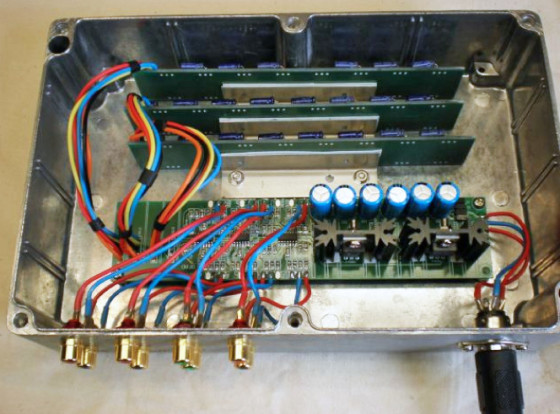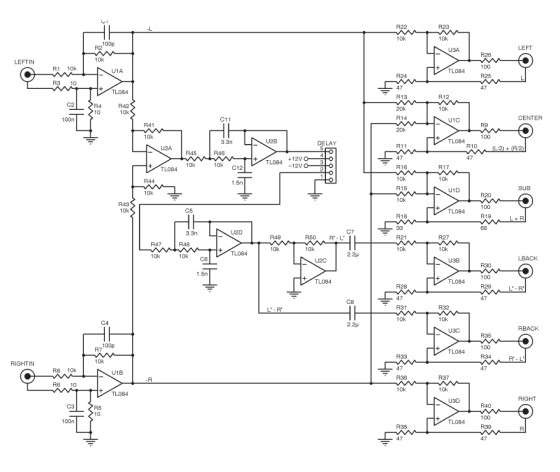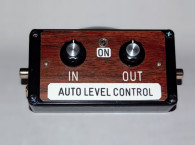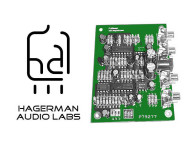
Doug Ford used the decoder connected to his home sound system, consisting of five Event 20/20 BAS powered studio monitors with a powered subwoofer. Explaning the reasons why he decided to design and build a surround-sound decoder, Doug Ford says: “I was using a Yamaha AV amplifier for audio signal control (i.e., volume, source selection, and surround decoding). I didn’t need the Yamaha’s power amplifier stages, because these were built in the speakers. Over time, I became increasingly aware that the Yamaha’s surround decoder was rather inadequate. It seemed to mainly produce center-front output.
The left, right, and rear output always seemed weak and poorly steered. In addition, the Yamaha’s audio path (i.e., A-D, DSP, and D-A) exhibited a significant latency (delay) of more than 50 ms. These defects irritated me so much I decided to design and evaluate a basic “passive-matrix” surround decoder.

“A passive-matrix decoder is conceptually simple: the incoming left and right audio signals are passed unprocessed to the front-left and front-right speakers, the left and right signals are summed to produce the center speaker signal, and the signal to the rear speakers is the difference between the left and right inputs.
“True” surround decoders detect various features in the incoming stereo signal, in addition to the “sum and difference” signals derived in a passive matrix. The signal’s amplitude-envelope characteristics are extracted to steer the apparent sound source to the correct location.
When this is correctly done, movie sound can be very good. Unfortunately, these decoders are rarely optimized for music, and decoder performance with music is generally terrible.”
Read the full article here
Editor's note: This article originally appeared in audioXpress, January 2013.





